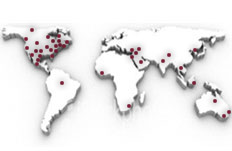The Problem:
Wireless sensors and other small independent devices require power to operate. If the unit is easily accessed and people available, changing batteries is an option. However, there are many situations in which a sensor or other device must be placed somewhere which is difficult to impossible to access later, yet the device must continue to operate for a very long time without maintenance. Batteries large enough to last for years make such devices much larger than necessary, and may leak or degrade in other ways.
Ideally such devices could take energy from their own environment. While a few applications allow the use of solar, commonly this is not an option. On vehicles or operating machinery, however, there are often significant vibrations, both from the engine driving the machinery and from secondary effects of operation, such as a vehicle going over bumps. There is significant energy in these vibrations, especially on the scale of small wireless sensors which require only milliwatts, sometimes less, to operate.
Unfortunately, all commercially available vibration harvesting systems have a fatal flaw when looked at from the view of general applications: they are restricted to harvesting in a very narrow band (a few Hz wide) of frequencies, as they are based on resonant harvesting (the harvesting device resonates strongly with some particular frequencies, becoming efficient at generating usable energy in those frequencies). The problem is that in most general applications, the available vibrations span a wide range of frequencies and no single frequency can be relied upon to be strongly present.
IEM’s Wise Solution
This problem is of great interest to IEM as we have multiple wireless sensor projects for use on aircraft and other vehicles which would benefit from an efficient power harvesting solution. Accordingly, IEM has researched a number of approaches and techniques to allow a power harvesting system to operate across a wide variety of frequencies. Many approaches are not practical; for example, while in theory one could construct a cantilevered design which could be self-tuning, the vibrations change too frequently for this to maintain a high efficiency, and are quite complex. Instead, IEM looked at various harvesting methods with an eye to using the efficient core methods and adding to them ways of extending the operating range without having a strong “drop-off” around specific narrow frequency bands. These basic designs have been completed and tested and show very favorable results. IEM continues this research and expects to develop products based on this new technology soon.


